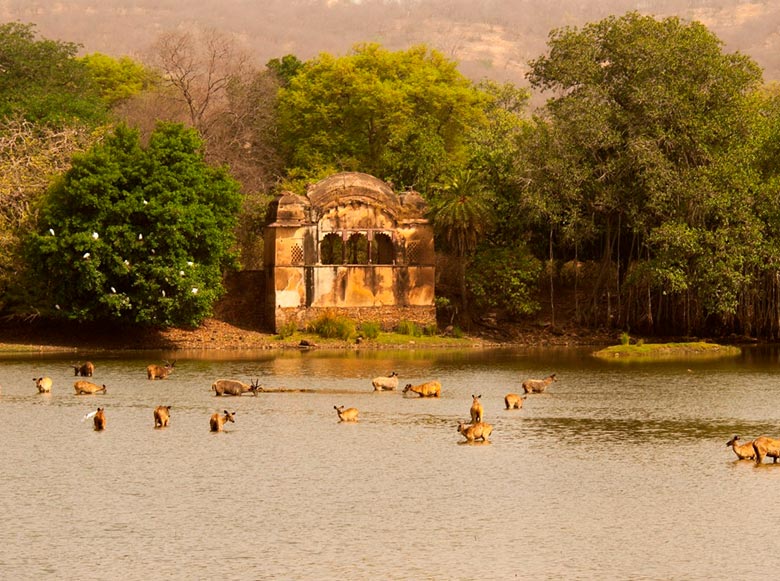Ranthambore is renowned for being among the best national parks of the country. It can be regarded as one of the best tiger reserves of India that is admired and visited by tourists for the rich flora and fauna species, spread across an area of 392 sq. km. You will get your feet on the UNESCO World Heritage Site followed by many other sightseeing spots like, temple of Lord Ganesha, the Trinetra Ganesh Temple, Two Jain temples, devoted to Lord Sumatinath and Lord Sambhavnath, The Padam lake and the Surwal lake, Jogi Mahal, and so on.
In 1973, the original sanctuary of 156 sq. km (60 sq. miles) was expanded to 411 sq. km (158 sq. miles) with a core area of 169 sq. km (65 sq. miles) and later became a national park. In 1984 an adjoining area of 104 sq. km (40 sq. miles) to the south became the Sawai Man Singh Sanctuary (named after the last ruling Maharaja of Jaipur).
Visit Ranthambore
The link between environment and history is evident in this park, and like Bandhavgarh National Park in Madhya Pradesh, the fort, the temples, the tanks and other ruins are a constant reminder of man’s involvement in the area.
The fort commanded a large area and until the late 13th century was the centre of a Hindu kingdom. During the 18th century, the area was protected as a hunting area for and by the Maharajas of Jaipur and it is thank to an extension of this protection that the park exists today.
The fort is the natural focal point of the park with a series of well established artificial lakes stretching to the north.
Most of the area is covered typical dry, mixed deciduous forest. The undulating hills have a few bare rockfaces and barren ridges. The area supports a mixed variety of birds, mammals and insects. On the gentler hillsides and in the valleys, dhok (Anogeissuspendula) is the main tree. The few areas of lush vegetation are around the lakes and have pipul, mango, palas and banyan, creating a thick forest. The huge banyan near JogiMahal at the base of the fort is reputedly the second-largest known.
The major predator here is the tiger but their territories overlap with those of the leopard, which are occasionally seen in areas on the park periphery. Jackal, hyena, caracal and jungle cat are also found in the park. In recent years, the tiger population has become increasingly diurnal and there have been many sightings of tigers hunting sambar on the banks of the lakes. The greater visibility of this magnificent animal, due to careful management, has made the park well known as one of the easier parks in which to spot and photograph tigers.
Sambar and chital are common throughout the park and are found in large concentrations near the lakes along with small groups of nilgai. In the scrub and thorn, chinkara are often observed. Other animals seen include the marsh crocodile (basking on rocks or along the banks of the lakes), wild boar, ratel, monitor lizard and sloth bear.
The rich birdlife reflects the varied range of flora on which it feeds. During the winter months the lakes attract a variety of migrant water birds.
The park entrance is only 13 km (8 miles) from Sawai Madhopur station on the main Bombay—Delhi line. A new broad-gauge line connects Sawai Madhopur with Jaipur (162 km/100 miles).
Best Time to Visit Ranthambore
Catch insights of the famous reserve during the winter months from October to December that is considered to be the best time for your visit. Summers are too hot to spot tigers on a safari and the park remains closed during monsoons.
How to reach the Ranthambore
If you want to reach the Ranthambore national park easily and conveniently, then you must take a flight from any of the connected cities and land at the Jaipur International Airport. Ranthambore is connected to Jaipur, Delhi, Agra and many other major cities. If you choose a train, then the nearest railway station is the Sawai Madhopur Railway Station which lies on the Delhi-Mumbai Trunk Route.
For more information about Ranthambore National Park contact Swan Tours one of the leading travel agents in India.

